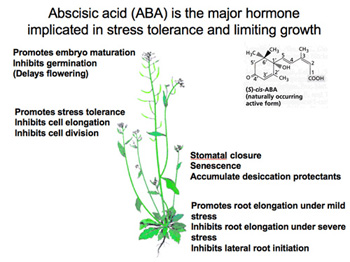In paper chromatography the pigments are dissolved in a solvent that carries them up the paper. To separate the pigments of the chloroplasts, you must use an organic solvent.
|
In order to get a thin line like the one above, you can roll coin on a leaf over the chromatography paper.
The colors that appear on the chromatography paper show the possible pigments the material is made of, in this case it is made out of chloroplasts.
Lab Quiz from Lab bench
1. Look again at the chromatogram you completed in the previous exercise. Which of the following is true for your chromatogram?
| a. | The Rf for carotene can be determined by dividing the distance the yellow-orange pigment (carotene) migrated by the distance the solvent front migrated. | |
| b. | The Rf value of chlorophyll b will be higher than the Rf value for chlorophyll a. | |
| c. | The molecules of xanthophyll are not easily dissolved in this solvent, and thus are probably larger in mass than the chlorophyll b molecules. | |
| d. | If this same chromatogram were set up and run for twice as long, the Rf values would be twice as great for each pigment. |
2. If a different solvent were used for the chlorophyll chromatography described earlier, what results would you expect?
| a. | The distances travelled by each pigment will be different, but the Rf values will stay the same. | |
| b. | The relative position of the bands will be different. | |
| c. | The results will be the same if the time is held constant. | |
| d. | The Rf values of some pigments might exceed 1.0. |
3. What is the Rf value for carotene calculated from the chromatogram below?
| a. | 1.09 | |
| b. | 0.17 | |
| c. | 0.96 | |
| d. | 0.33 | |
| e. | 0.50 |
